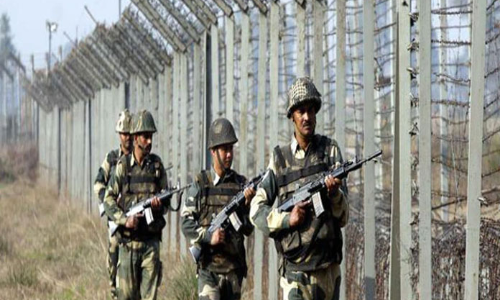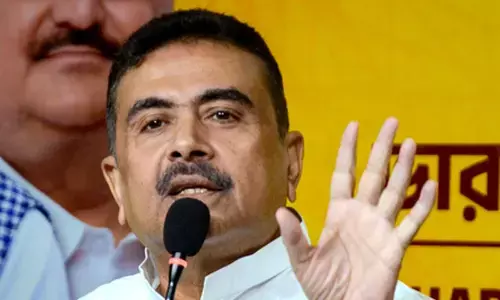LOC on fire with constant ceasefire violations

The border between India and Pakistan in Jammu and Kashmir JK has been the scene of unrelenting firing not only for current year, but also for many years is causing concern for India India shares 3,323kmlong border with Pakistan of which 221 km of the International Border and 740 km of the Line of Control fall in Jammu and Kashmir and Pakistanioccupied Kashmir
The border between India and Pakistan in Jammu and Kashmir (J&K) has been the scene of unrelenting firing not only for current year, but also for many years is causing concern for India. India shares 3,323-km-long border with Pakistan of which 221 km of the International Border and 740 km of the Line of Control fall in Jammu and Kashmir and Pakistani-occupied Kashmir.
According to Report by the United States Institute of Peace (USIP), ceasefire violations (CFVs) along the India-Pakistan border have been a major cause of political, military and diplomatic escalation between India and Pakistan, over the past several years.A closer analysis of the report says that ceasefire agreement of 2003 was not a written document and signed by the both countries, unlike the previous ceasefires of 1948, 1965 and 1972, all these are war-termination agreements.
But, the 2003 ceasefire agreement is entirely different from above agreements, actually it was negotiated through the back channel by the RAW and ISI chiefs in mid-2003, the telephone conversation between the two DGMOs became the basis of a ceasefire. The report says that there were no agreed principles or norms associated with the agreement as it was a mere phone conversation that ended the firing. In 2002, the number of ceasefire violations reported 4,134, which came down to just four in 2004, after the ceasefire agreement.
In fact, there is no clarity on how cease fire violations (CFVs) are counted, as there is no commonly-agreed rule among the Indian and Pakistani armies and the BSF and Pakistan Rangers for counting CFVs. As per Geneva norms, a violation usually does not consist of one shot. One CFV might be thousands of shots fired by a range of weapons from personal firearms to heavy artillery across multiple areas within a period of 24 hours in reaction to an initial violation.
Speculative firing that soldiers undertake for a variety of reasons is not counted as a violation. Firing on one’s own side is also not counted as a CFV. Moreover, stray firing without effect often doesn’t get counted.According to the data compiled by the Union Home Ministry for the past 16 years that was submitted to Lok Sabha recently reveals that Pakistan has violated the truce agreement on both LoC and IB over 1,432 times, killing 59 security personnel and civilians in 2018.
The data also shows that 1,684 casualties were reported in combating terrorists infiltrating the Indian borders between 2005 and 2017In 2014, there were 583 incidents of ceasefire violation in which 14 civilians and three security personnel were killed and 101 civilians and 28 security personnel were injured. In 2015, the number of ceasefire violations was 405; 347 in 2013, 114 in 2012, 62 in 2011 and 70 in 2010.
In 2016, there were 449 incidents of ceasefire violations in which 13 civilians and 13 security personnel were killed and 83 civilians and 99 security personnel were injured. In 2017, Pakistan violated the truce agreement 771 times.In 2018, the number of ceasefire violations by Pakistan was reported 2,936 -- the highest in the past 15 years with an average of eight cases daily -- in which 61 people were killed and over 250 injured.
What causes ceasefire violations? An analysis of the CFV data for the past 16 years shows that such violations have multiple causes that include: construction, repair or enhancement of defence works on either side of the dividing line by the respective forces; lack of proper mechanisms to regulate the crossing of civilians from one side to the other; occasional lack of territorial clarity as to which piece of land falls on whose side which arises due to an absence of proper territorial demarcation of the LoC, and; reaction to political and diplomatic developments on either side.
It means that several little-known local level military factors often trigger CFVs that could last for days. Such tension on the LoC in Kashmir and IB in Jammu may not have been sanctioned by the military or political higher-ups in India or Pakistan.The data shows that the areas most affected by ceasefire violations on the Indian side are Poonch and Jammu, followed by Samba and Rajouri.
On the Pakistani side, Sialkot, Rawalakot, and Kotli have reported high incidence of CFVs. These locations essentially face each other across the international border and LoC.Though several measures have been taken by the two sides to control CFVs, but they are not yielding results. The political and defence experts opined that the 2003 CFA should be written down clarifying the principles, norms, dos and don’ts that are required to sustain the CFA by both the countries.
Second, the two sides should consider finalizing the ground rules agreement of 1961 to manage the International Border in the Jammu sector. Finally, it would be useful to jointly identify sensitive sectors so that the specific related issues can be understood and resolved at senior levels.
The experts also pointed out that the defence outlay for 2018-19 is about 1.58 per cent of the GDP the lowest since the 1962 war with China, when it was a mere 1.65 per cent of the GDP.
Incidentally, India’s defence budget is now the fourth largest in the world after that of the United States, China and the United Kingdom. It urgently requires an increase in capital outlay by up to 2 per cent to 2.5 per cent of the GDP or raise by about 20 per cent every year over the next five years, suggested the experts.














